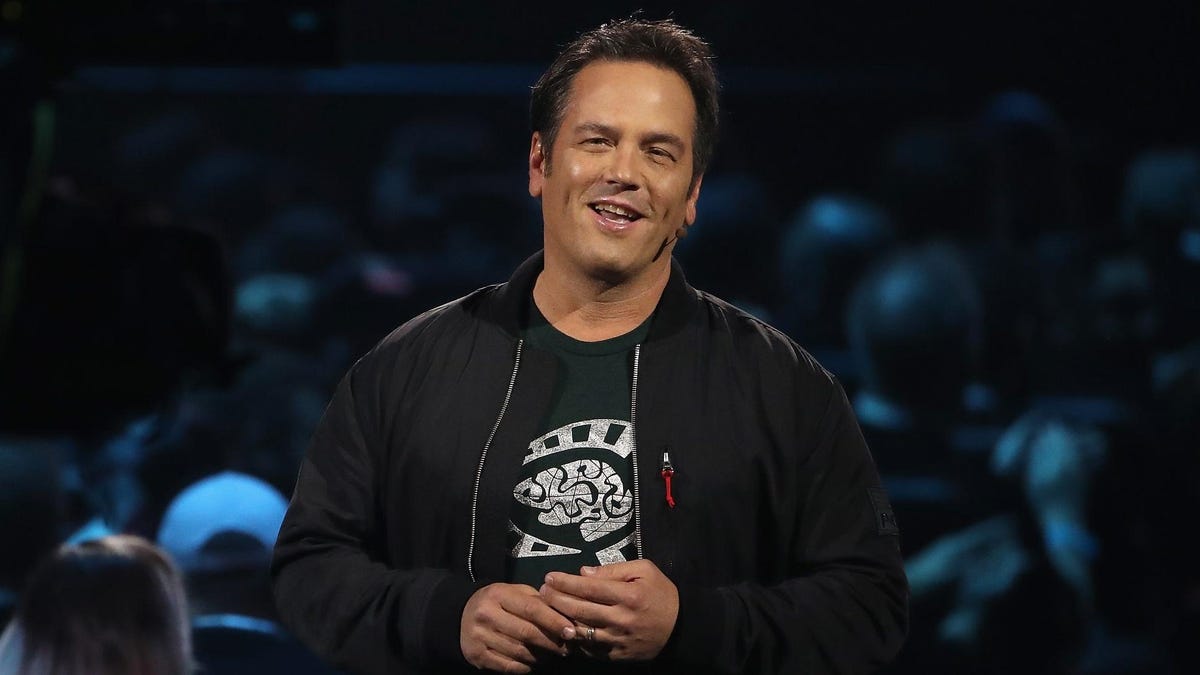- cross-posted to:
- games@lemmy.world
- cross-posted to:
- games@lemmy.world
The email: Spencer writes,
Over the past 5-7 years, the AAA publishers have tried to use production scale as their new moat. Very few companies can afford to spend the $200M an Activision or Take 2 spend to put a title like Call of Duty or Red Dead Redemption on the shelf. These AAA publishers have, mostly, used this production scale to keep their top franchises in the top selling games each year. The issue these publishers have run into is these same production scale/cost approach hurts their ability to create new IP. The hurdle rate on new IP at these high production levels have led to risk aversion by big publishers on new IP. You’ve seen a rise of AAA publishers using rented IP to try to offset the risk (Star Wars with EA, Spiderman with Sony, Avatar with Ubisoft etc). This same dynamic has obviously played out in Hollywood as well with Netflix creating more new IP than any of the movie studios.
Specifically, the AAA game publishers, starting from a position of strength driven from physical retail have failed to create any real platform effect for themselves. They effectively continue to build their scale through aggregated per game P&Ls hoping to maximize each new release of their existing IP.
In the new world where a AAA publisher don’t have real distribution leverage with consumers, they don’t have production efficiencies and their new IP hit rate is not disproportionately higher than the industry average we see that the top franchises today were mostly not created by AAA game publishers. Games like Fortnite, Roblox, Minecraft, Candy Crush, Clash Royale, DOTA2 etc. were all created by independent studios with full access to distribution. Overall this, imo, is a good thing for the industry but does put AAA publishers, in a precarious spot moving forward. AAA publishers are milking their top franchises but struggling to refill their portfolio of hit franchises, most AAA publishers are riding the success of franchises created 10+ years ago.
Spencer’s analysis is just an overview of the current symptom.
This is the real disease:
because it sees a new platform it can scale to feed the financial growth demanded by investors.
Investors/shareholders demand infinite growth, but there’s finite space to grow (millions of games, few customers). This is why, in the past 2 decades we’ve been seeing the scummiest of practices being employed again and again, as well as a 300% hike in base prices. Capitalism has eaten gaming.
But we’ve been observing this trend in AAA and AA publishers/developers mostly. Indie gaming is alive and well and evolving towards being better and better. Why? Because indie developers are not usually beholden to investors.
Once you hear a gaming company you used to like has gone public, say your condolences and then run away.
It’s the same shit across every industry. Successful company goes public, investors demand yearly double digit growth, and after a few years they are imploding.
Investors do not care about the future, sustainability, or anything except immediate profitability. What you described is exactly what happens, in gaming and everywhere else. It sucks.
I would like to refer to this image which is probably more than a decade old now
https://frankkliewer.com/wp-content/uploads/2015/09/shareholder-value.jpg
That last sentence is so spot on. After reading a topic yesterday, I was trying to think of one time a game company went public, and it ending up a good thing for the gamers in the long run. If anyone knows of one, I’d love to hear it.
Check back in on Devolver, Paradox, and TinyBuild in 10 years. They’re scaling up to cover the market that Ubisoft, Activision, EA, and Take Two abandoned.
This is why, in the past 2 decades we’ve been seeing the scummiest of practices being employed again and again, as well as a 300% hike in base prices.
Two decades ago, games were $50 which, due to switching to discs, was a price reduction over cartridges, so this point in time is a bit cherry picked. But even rolling from there, a 300% hike in base prices would mean games cost $200, and that’s just not true.
50 dollars were console games. On PC you’d often find the same game at 30 dollars (disk) or 20 dollars (steam) on release. The difference was due to console makers taking a standard fee cut from every sale.
The first AAA games back then to be released at 40 and 50 dollars on PC were COD MW1 and BF3, which set the trend for all other games since then. This was pure profit for the publishers, since there was no cut for console makers on PC. And before you say it, no, the Steam cut back then wasn’t even comparable (much less since it was a % cut and not a standard fee). In fact Steam hiked their cut because of the price hike triggered by EA and Activision, which is what then made EA pull their games off Steam and create Origin.
I don’t know where your information came from, but a lot of it is very wrong. I thought maybe you might be from some other country, but that would mean it’s a country that uses dollars that are stronger than US dollars, which I don’t think is a thing.
- $50 was the standard set by PlayStation for its biggest games, which N64 couldn’t match due to cartridge costs, but this standard carried over to the next generation and continued very, very briefly into the life of the Xbox 360. By 2006, all 360 and PS3 games were $60.
- I bought many PC games on disc back in the day. Call of Duty 2 (not Modern Warfare 2; Call of Duty 2) was $50. You can see here via the wayback machine that a week after its release, Modern Warfare 1 is $50. Here’s the PC version of Flight Simulator 2004 and the first Knights of the Old Republic for PC at $50 in December 2003. I remember there was a push to make those $50 games into $60, and the likes of Half-Life 2 and Doom 3 could sort of get away with it back when others couldn’t. After buying Call of Duty 2 on disc for $50, I got the $60 version of (original) Prey, because the $60 version came on a DVD instead of several CDs, and installing games from 5 or 6 CDs was a pain that I was willing to pay $10 to not deal with back then (it also came with other collector’s edition stuff).
- Steam still does, and always has, taken a percent cut from game sales and not a flat fee. They priced it at 30%, because that was better than brick and mortar retail. These days it starts at 30% and follows a sort of regressive tax system once your game is super successful so that you’re not as tempted to leave Steam for other platforms.
- EA pulled their games off of Steam because 30% of a lot of sales is a lot of money, and they wagered they’d stand to do better if they made their own storefront, but after the first couple of years, they stopped trying to make a platform to compete with Steam and really only cared about keeping their own releases there for that 30% cut that they no longer had to pay to someone else.
But even rolling from there, a 300% hike in base prices would mean games cost $200, and that’s just not true.
if you consider that nowadays (almost) all games ship incomplete and demand DLCs… yeah, it’s true
That wouldn’t be the base price; the base price is $70 for the biggest games. I think people are also a bit liberal with labeling games as “incomplete”, when really they mean, “this game will have DLC after the fact because it’s the best way to make games that take years to make without laying people off”. And just to take a brief look along some games in my library, Cyberpunk 2077 would cost a maximum of $100 with DLC, by the time Guilty Gear Strive is sunset (if it runs for 5 years) it will still be shy of $200 in a worst case, and I’m seeing far more games without DLC than with DLC.
DLCs aren’t the only “evil”, there’s also the case for microtransactions and other stupid monetization bullshit schemes
So don’t play those games. The only way that’s “almost all games” is if you’re looking at the mobile market. Once again, still not included in the base price.
So don’t play those games
…and I don’t, I prefer supporting indie devs
Fight anything that prevents you from owning and controlling your content. Reward, companies and groups that allow you to truly own what you purchase.
It’s a noble stance, but literally everything is digital these days. Even disk based games are requiring day 1 updates (or aren’t coming with the content on the disk in the first place), meaning you’re at the behest of the platform to keep your content available.
Digital is not the problem. Lack of true ownership is the problem. GoG is DRM free. Steam isn’t great on this, but it’s better than other alternatives for now. Sailing the high seas is the best option in many cases.
It’s not all or nothing, you can take small steps to stop supporting the worst offenses. First step, don’t use any game streaming services where you just subscribe to a rolling catalogue each month/year. PlayStation Plus and Xbox Game Pass are examples of this.
Nintendo is awful too, their games should be ripped from physical media if possible and emulated, or otherwise aquired on the seven seas and emulated. It’s a great way to play their games without supporting their evil practices.
Support FOSS games and FOSS-friendly companies. Valve is a good example. Although not perfect by any means, they have proven to be far friendlier to FOSS apps, games, and platforms than most other companies. If you have to get DRM-locked games, get them through Steam. At least they have offline mode and allow full access to all your game files so you can save them to a separate location for archives/backups.
It starts with small things, but if lots of people start doing this, it will have a noticable effect.
Nintendo Switch carts have actual content on them - they’re more than just fancy unlock keys.
Kingdom hearts has entered the chat
Yeah, cloud versions (which are stupid) require an internet connection… do they even sell the cloud version as a cart? If they do and it’s not advertised as such, that’s obviously a problem.
That’s the problem though, most Switch games are not available on carts.
If you count eShop shovelware, sure. Most Switch games worth owning are available on carts.
I won’t argue that the eshop isn’t full of shovelware because it is - but even shovelware needs to be preserved.
The problem with this line of debate is that there are some games worth having that are only on the eshop and it’s still a digital barrier to you truly owning the software. Saying most games are available on a physical medium doesn’t help those that aren’t and it’s a situation that’s only going to get worse.
Essentially what I am saying is that none of the big 3 are innocent here and just because some are slightly better than others doesn’t make it okay.
Most games come on the disk and don’t require an internet connection (unlike some Xbox titles like Halo Infinite). Day 1 updates only matter for PC because performance can be hit or miss. On consoles, it’s not such a painful prospect. My PS4 has been offline since I bought it and every game has run fine after installation. I’m aware that Cyberpunk doesn’t run well but it never should’ve been on PS4 in the first place.
Digital storefronts like GoG do allow you to own your game by giving you the ability to download DRM free versions of games. It’s possible to do but publishers like EA have primarily live service games which means DRM is their bread and butter.
Game preservation is important to me so GoG is a godsend for the work they do.
All those games may run fine for you, but you’re still missing day one patches for most games. Maybe even some content you wanted and didn’t realize was even there without being online to download patches and hot fixes. Also more and more reports of console discs not having any data on them and just being a code to allow you to download the game.
I’m not saying this is a good thing, but it is the reality of gaming today.
It sucks. I’ve been backing up PS3 games on my hard drive for a while now and I’d like to be able to do that for the PS4 too.
My contention is why we need day one patches in the first place. Surely, if games were properly tested, they wouldn’t need to be patched as soon as they release. Just seems weird to me that they release a patch immediately following release when that could’ve been done before release?
I don’t disagree. But these days going gold doesn’t mean the same. They all seem to take the last month or two to still iron things out before it really releases.
The suggestion here is that the type of game that can thrive on a subscription service is either a small one that benefits from better curation and visibility or a live-service one that can make up revenue on the backend by charging all the new players microtransactions (the new store shelves are inside the games themselves).
I’ve been saying this since Game Pass launched: it encourages scummy monetization. The kind of games that come to it are going to have more and more content locked away behind microtransactions to make up the money lost by not selling copies. It’s going to gradually become full of “free” to play garbage, and people will accept it because they didn’t pay for an individual game outright.
Of the two options that Phil says Game Pass encourages (and I agree with his analysis), one is the opposite of scummy and something the market could use more of.
How about fix the ballooning development costs? Games dont need $200 million plus to be good. Maybe start with that problem.
We don’t need super high quality graphics for every AAA production. Sometimes, Just good enough graphics, but with better interactivity with the environment like ToTK and Baldurs Gate 3. I mean , I love RDR2, but honestly, shrinking horse testicles is a bit too much attention to detail.
As an example, cell shading of ToTK still looks amazing and far more enduring as a graphics style. Also, Elden Ring, arguably has worse graphics than RDR2 or the latest CoD. But, because of it’s amazing art direction it will age pretty well.
This can help really reduce the high dev costs.
The horse testicle physics are the heart of the game, and we should be boycotting any game that doesn’t have them!
Game developers are scared of having to put horse testicle physics in their games but they need to understand this is the new standard!
They just are scared of having to actually watch horse testicles and truly understand what makes them work but that’s just laziness talking!
I’m done giving developers a pass for not even putting in the minimum. Larian and Bethesda didn’t even put horses in their games because they’re so afraid of rendering the sack.
Everyone says Phantom Liberty will finally redeem Cyberpunk, so I can only assume CD Projekt has spent the past three years creating a perfect horse with the most dazzling balls we’ve ever seen. Can’t wait for those RTX and DLSS 3.5 rendered oysters.
… As someone who hasn’t played RDR2, or really paid attention to it… What? There are seriously shrinking horse testicles?
Yeah, Horse testicles shrink in cold regions of the map. It’s kind of a dumb detail to be honest.
I need to know if this detail was in release notes, or some player found it by repeatedly checking his horse testicles.
Thats what this Spencer guy says in the email:
Over the past 5-7 years, the AAA publishers have tried to use production scale as their new moat. Very few companies can afford to spend the $200M an Activision or Take 2 spend to put a title like Call of Duty or Red Dead Redemption on the shelf. These AAA publishers have, mostly, used this production scale to keep their top franchises in the top selling games each year. The issue these publishers have run into is these same production scale/cost approach hurts their ability to create new IP.
I think a lot of that also gets spent on marketing.
The budget is also a marketing ploy. The average person hears about a game costing hundreds of millions to make and they think “well then, it MUST be good”. It’s more or a pissing contest among publishers. Most of that budget does indeed go to marketing and executive wages/bonuses.
And from the publisher’s perspectives, that’s really a good investment of the budget, because it doesn’t just drive up sales. It also cultivates customer loyalty and fanboyism (e.g. “we are spending all that money because we believe in the game, and we want to give our loyal fans the best experience possible” is a very common line in pre-release interviews).
For example, there’s a false equivalency among gamers, propagated by this kind of propaganda: “I have to pay the high prices and engage in microtransactions/DLC, because that supports the game developers and their high budgets”. In reality, the people who actually make the game see very little of that money. Their wages, in most instances, are shit and do not reflect the hours they put in. However, gamers rarely want to understand that, and instead extend the publisher pissing contest among themselves (“the game I’m playing now spent more money than the game you are playing, therefore it’s the superior product”).
Seriously, I worked in media creation and like looking at movie budgets is painful for me cause so much of it is to pay people already at the top and overpaid more than enough.
Production and material costs haven’t grown as much as marvel movies would make you think so it is all going to executives lawyers and heads of the sweat shops of special effects houses.
Even if it does, thats still too much money. How much money did Hollow Knight spend on marketing? Or what about Terraria? Or Minecraft pre-buyout? How much was spent on marketing for games like Deep Rock Galactic? I can guess probably less than $100 million each. Maybe even less than $10 million.
You’re listing outliers that did well despite their smaller marketing budget. There are tons of great games from smaller studios that get buried because nobody knows about them.
Hollow Knight sold 2.8m copies as of 2019
Modern Warfare (2019) sold 31m copies
Or collectivize game studios.
They are at the point where they equate video games with Hollywood.
AAA video game budgets have surpassed Hollywood years ago.
Rightfully so. A lot of modern games are basically interactive movies and a lot or even very sophisticated interactive movies with fantastic storytelling, great acting, art direction, cinematography, music score, you name it.
Yeah, way more work went into something like GTA V than any movie. The script alone is orders of magnitude longer.
Well I don’t know how long the GTAV script is, but A Girl Who Chants Love At the Bound Of This World: YU-NO came out in like, 1996 and its script has ~1,300,000 words in it.
That’s more words than Mass Effect 1-3’s scripts combined.
That’s about 100,000 words less than the combined scripts of the entire Metal Gear Solid series excluding MGS5.
And YUNO was made by like, 25 or less people I think. At a time when making computer games was not so easy. They didn’t have the tools that make game development easy like we do these days, they mostly had to write their own software and had to deal with a lot of hardware limitations.
Effort to make good games these days has actually gone down a lot. There is really no excuse to have such a massive budget and still release a bug ridden, unfinished mess.
They can still have similar production value and not be open world games that take 80 hours to finish. It just makes far more sense to me to bet small with tons of projects than to bet big with only a few, because then you’ll find the PUBGs and the DOTAs that Phil is talking about eventually.
So, Microsofts suggestion for the problem of studios beating old IP to death isn’t to support smaller indie projects that are developing new IP.
Doesn’t gamepass make this problem worse? It makes it affordable and incentivizes people to try many of those big AAA games so studios still get paid (maybe less than if it’s bought outright, but still i imagine it’s still compensated).










